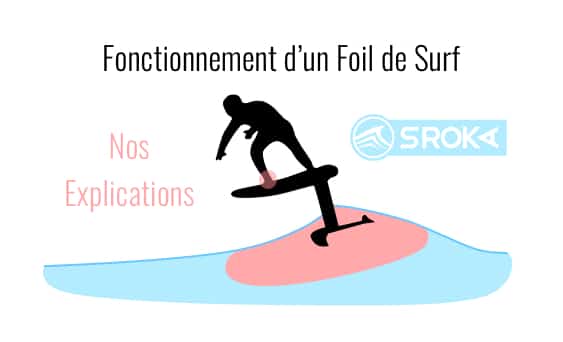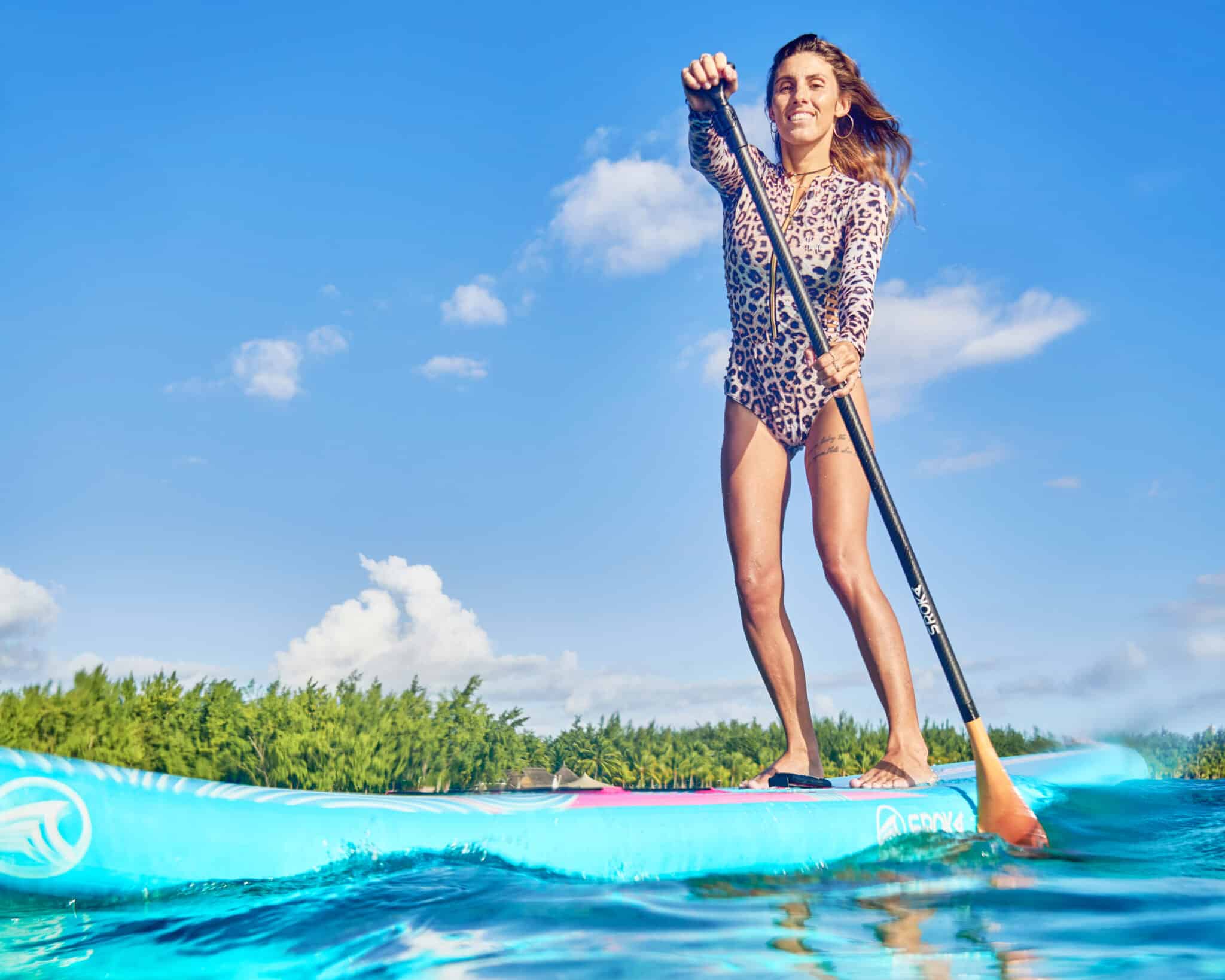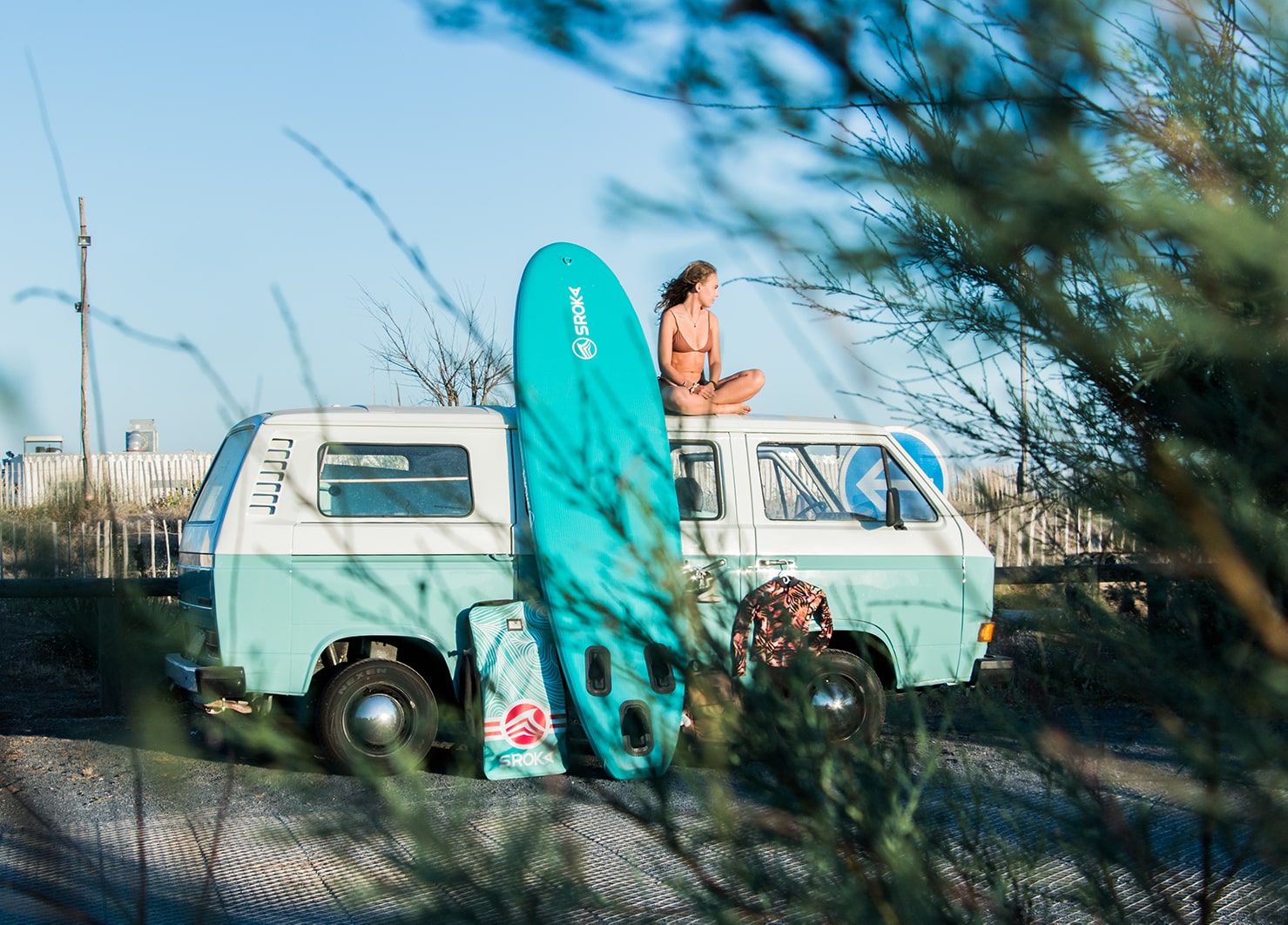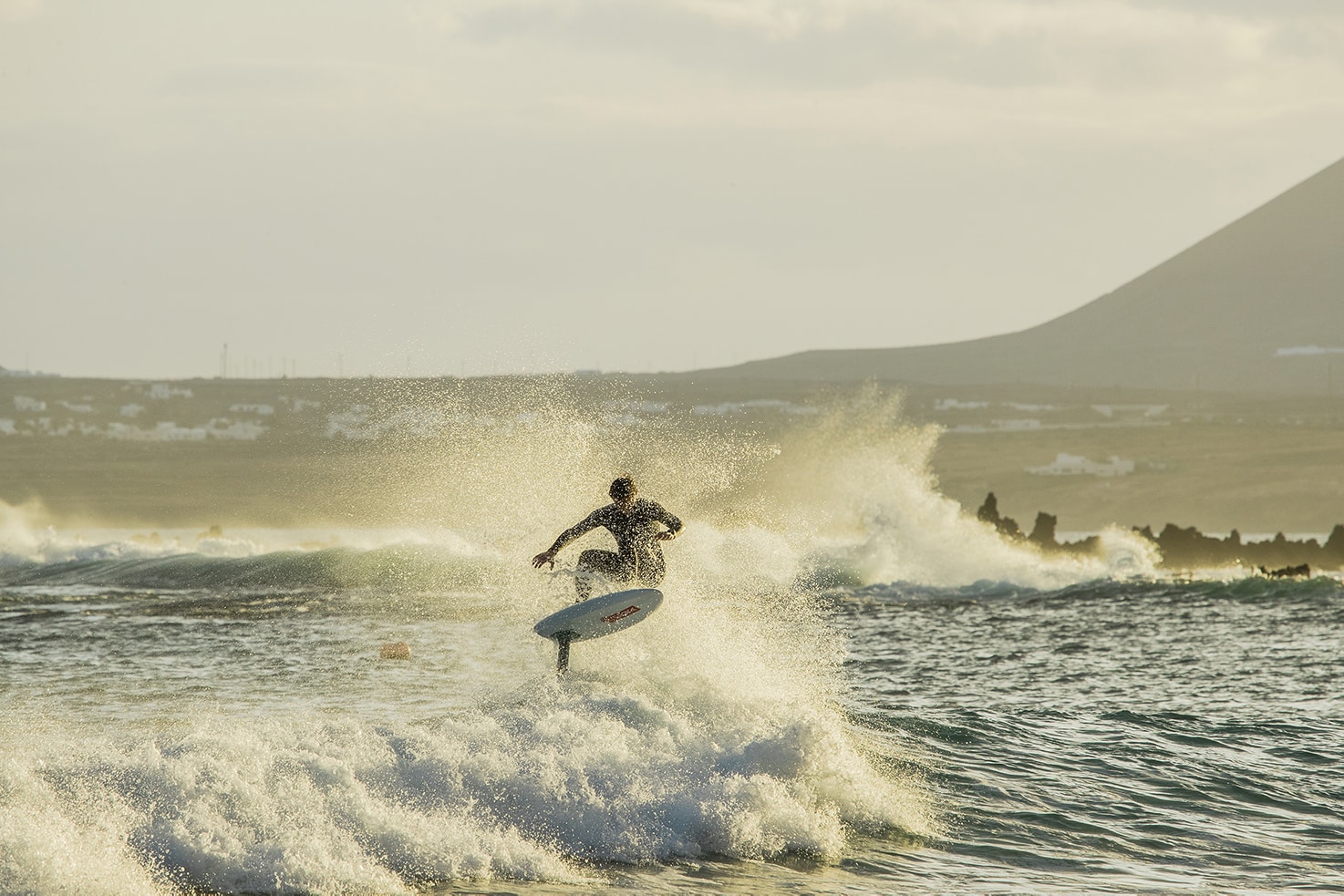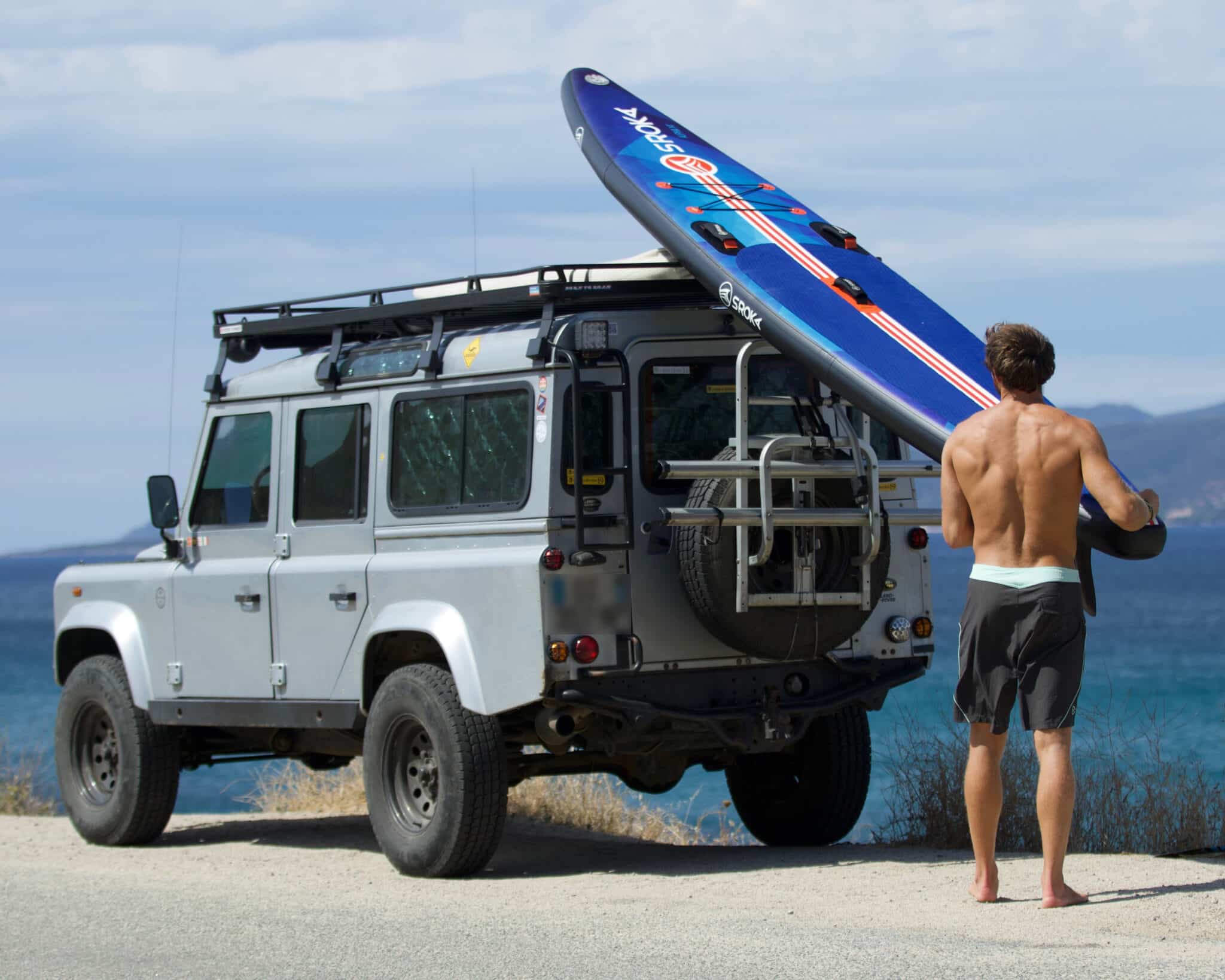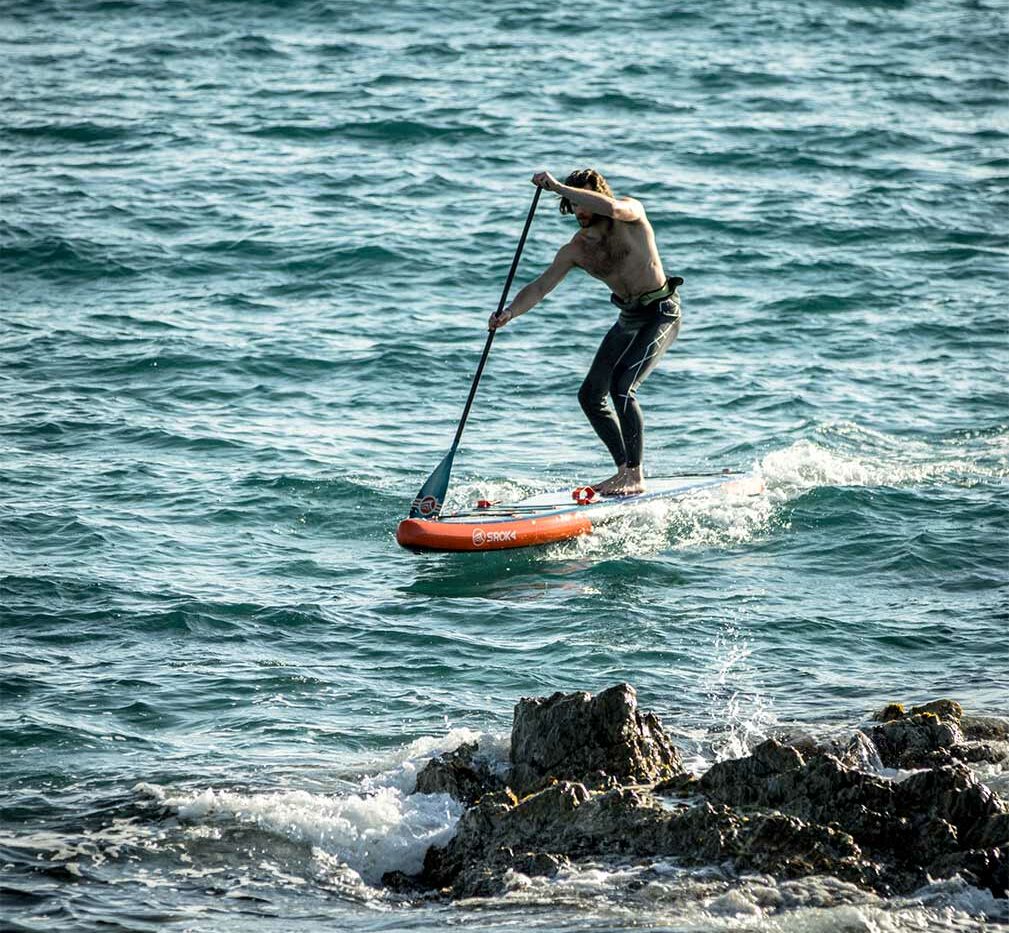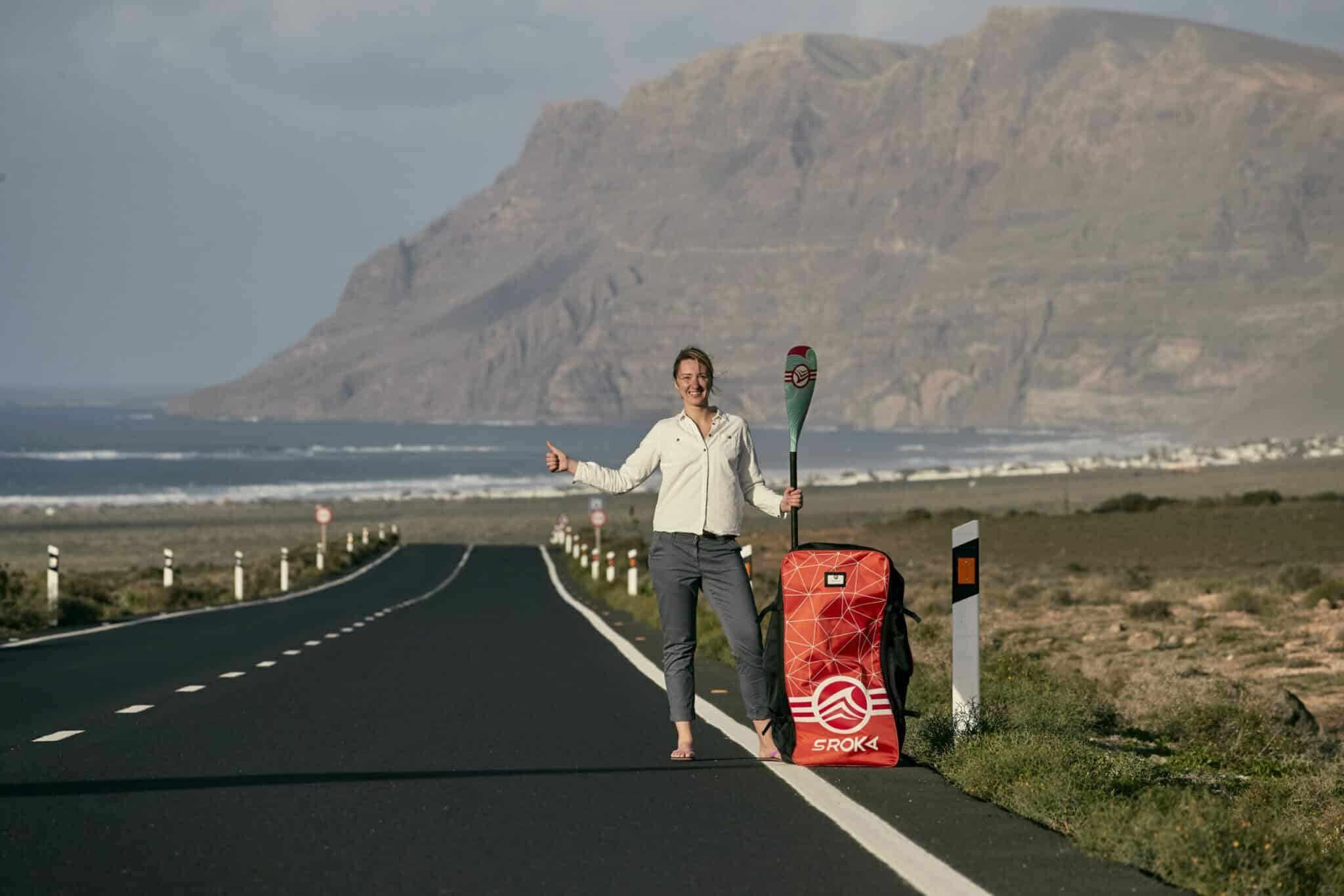 LE MAGAZINE
LE MAGAZINEAll our tips for starting dockstart surfing foil

All our tips for starting dockstart surfing foil
“It’s not for us old people, it’s for young people with a sense of balance” You may hear this type of argument on the beaches. It’s not true at all. In this article, we’ll give you all the steps and information you need to get started with dockstarting. We’ll look at the equipment you’ll need to get started, to progress and to perform, and we’ll cover the different techniques. Getting started with dockstart requires a lot of repetition to get over the initial difficulties. But you’ll also find it an excellent way of training when the wind isn’t there to wing foil.
What is dockstart?
Ever heard of the dockstart? It’s that thing where you smash your face off the dock on your foil, thinking you’re athletes, and try to stay in the air by wriggling like worms. It’s fun, it’s green and it’s good for losing guts. You don’t need wind, waves or kites to go foil. Just the right gear, a light board and a spot with a pontoon and deep enough water. Dockstarting is tough at first, but you’ll learn. And it’s a great way to improve your pumping skills and prepare for surfing foil. It’s a great way to let off steam in a short space of time. Muscle strengthening guaranteed!
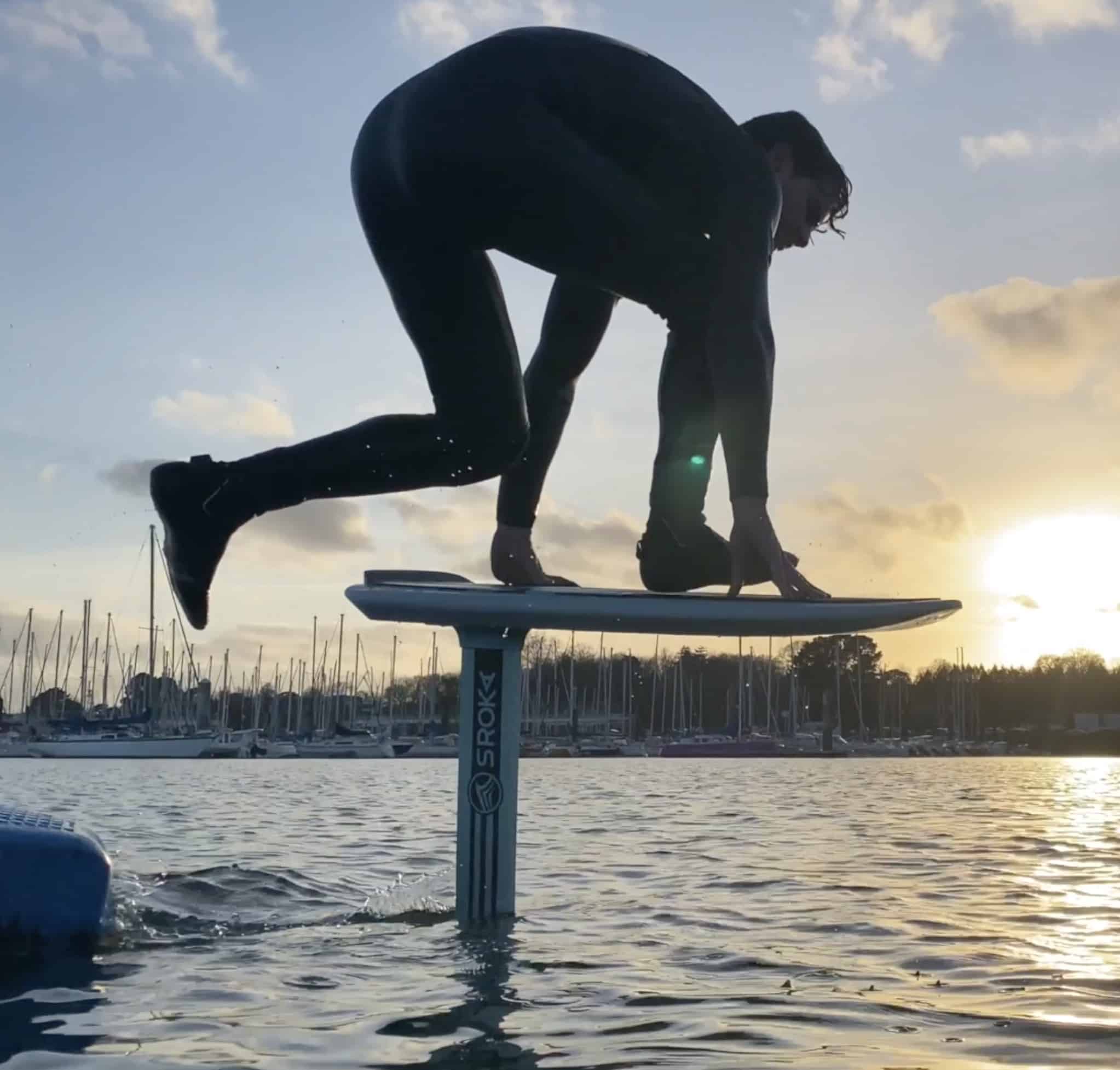
How do I get started with dockstart foil?
1 – Choose a suitable pontoon or dock
For a successful dockstart at foil, it’s important to choose a pontoon or dock that’s wide and stable enough to allow you to run with the board in your hands. Avoid pontoons or docks that are too narrow or unstable, which could throw you off balance. Preferably choose a floating pontoon where your front fender can pass under the dock without getting in the way when you run. A pontoon between 30 and 60cm above the water surface is perfect. You’ll need to adapt the height of the mast to the height of the pontoon. A high pontoon will require more mast height, while a low pontoon may allow you to use a shorter mast.

Generating current speed
For a successful dockstart at foil, you need to generate speed by running onto the pontoon or dock with the board in your hands (hold the board by the rails) and position foil slightly underwater. Try to run as fast as possible while keeping your balance. In general, the smaller your foil, the more speed you’ll need. Some large foil like our 2000 HA require almost no speed to get going, and our riders even manage to get going without a run-up. So adapt your speed to the power and surface area of your front fin.
Once you’ve generated enough speed while running, it’s time to jump onto the board. To do this, let go of the board’s front rail to place your front hand on the surface of the board, and jump onto it, landing with your feet well positioned. You can use the position of your hands to position your feet as close as possible to the ideal position.
The position of your feet is very important, as poor placement is difficult to make up for. It’s up to you to define your optimal position. Generally speaking, on a small board, the rear foot is right above the mast and the front foot is just behind the front hand, which is positioned on the deck.
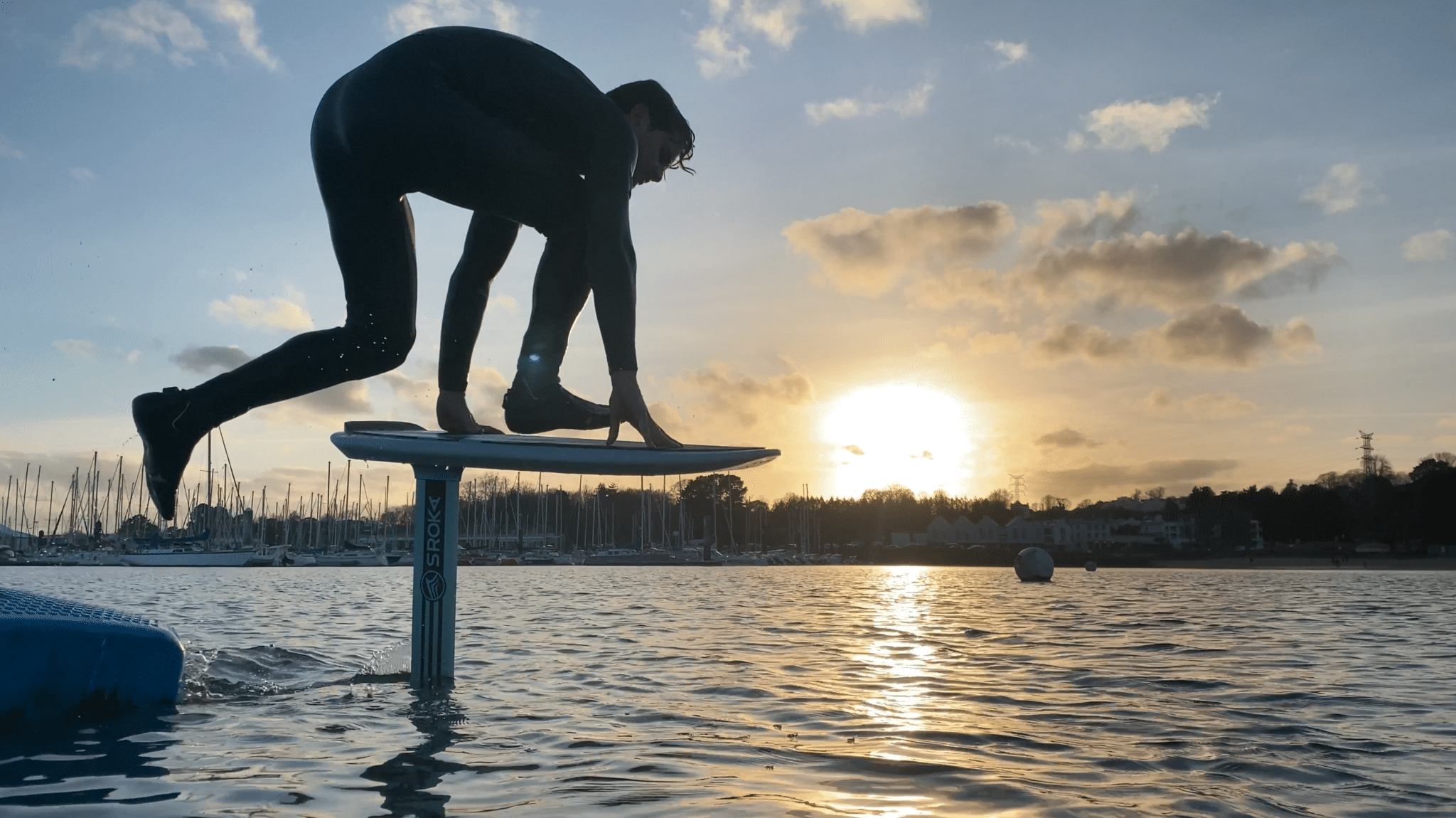
Staying aloft
Once you’re well positioned on the board, it’s time to start pummeling and gliding for as long as possible. To do this, continue to generate speed by pumping and swinging your foil downwards, then lighten your support so that foil rises. Ideally, it’s not just your legs that are working, but you need to be able to transmit energy to foil using the whole mass of your body to keep off-balance.
Keep your gaze fixed forward and try to keep your center of gravity above the board in the air.
Flying as high as possible will reduce drag at foil and therefore enable you to fly longer with the minimum of effort.
Arm movement when pumping: at the start, you can use your arms to lighten up, and this also helps to set a pumping frequency and rhythm. As your level increases, you’ll need to use your arms less and less.
By following these steps and practicing regularly, you should be able to master the dockstart technique on foil and take off quickly and easily from any pontoon or dock.
Little extras to remember:
- Check that there are no ropes or chains under the pontoon to avoid damaging the pontoon. foil
- Avoid banging your board permanently on the pontoon to preserve your equipment as long as possible.
- When you fall, try to hold on to your board to prevent it from bumping into a boat if you’re in a harbour.
- Choose a rigid foil that automatically transmits your pressure to the foil. You’ll gain in efficiency.
Advice from Bruno SROKA
Keep your gaze fixed forward and try to be as stable and “straight” as possible when landing. “Straight” means that your center of gravity should be above the board. If you’re too far forward, backward to the left or right, you’ll start out with an imbalance that will be difficult to correct.
What equipment should you choose for dockstarting?
Still want to get started with dockstart? The first step is to choose the right equipment, otherwise you’ll have a hard time. The most important thing is foil, because that’s what’s going to make you fly or dive.
The choice of foil
There are different types of foils depending on their aspect ratio, i.e. the ratio between the length and width of the wing. The higher the aspect ratio, the longer the wing with less chord. The lower the aspect ratio, the more chord and the less span.

Low/mid aspect foils
Mid aspect ratio foils are the easiest to start with. They are easier to manage and to launch in dockstart mode. A foil medium aspect ratio is a foil with less span and more chord. With this type of foil, it’s easy to make up for mistakes at the start, thanks to their maneuverability, which makes it easy to get the glider back on track, and their excellent power base at low speed. However, they don’t glide as long as high aspect foils (for more or less the same size) and will therefore require a higher pumping frequency.
Our best mid aspect wings for pumping are the classic range, in particular the 1750 and 2000.
If you take a foil that’s too small or too technical, you’ll probably fail. So you’ll have to accept an easy foil, which will slide a little less, but which will allow you, as a beginner, to pump for a few seconds to tens of seconds.

High aspect foils
High aspect ratio foils are the most efficient because they glide better and glide much longer and more easily with less effort. They are ideal for those who want to do pumping runs. On the other hand, they are more technical to master at the start and to relaunch after a turn, due to their large wingspan.
Our best HA pumping wings are the Lift 1350 and 2000.
The 1350 is ideal for smaller riders (under 70 kg) or advanced riders who want to go faster.
The 2000 is ideal for those over 70 kg or those who want to glide for longer with less effort.
A wing with a large wingspan will give you much more glide, but will turn less quickly. So if you’re looking for record-breaking time or distance, we advise you to use this type of front wing with a high aspect ratio.
Choosing the right mast height
The mast in the water generates drag. So if you have a long mast and you want to fly very low in the water, then you’ll have a lot of drag. To be efficient in pumping, you need to fly high on the water to have less mast surface in the water and thus drag less water. So a mast between 70 and 80 cm seems perfectly suited. The higher you are on the water, the shallower foil is, and therefore the less drag there will be around the mast. This mast height is also determined by the height of the pontoon. If the pontoon is high, then the mast height needs to be increased. If the pontoon is low to the water, or if you want to make a beach start, then a 70 mm mast is recommended.
Choosing the fuselage length
Pumper means swinging your foil up and down.
The length of the fuselage will influence the pumping frequency and consequently the ease with which the foil can be made to oscillate longitudinally. The further the stabilizer is from the front fin (long fuselage), the more it will stabilize the foil in the longitudinal axis, and thus slow down oscillation (oscillation will be more difficult). However, for beginners, there will be more time to improve pumping efficiency.
We’ve created a special pumping fuselage where the mast is set back 3 cm compared to other SROKA fuselages. This allows a better distribution of support on the rear and front legs, thus optimizing flight time.
A shorter fuselage will make it easier to oscillate, but it will be less stable but more playful.
So depending on your level, you can make your foil pumping easier or more playful.
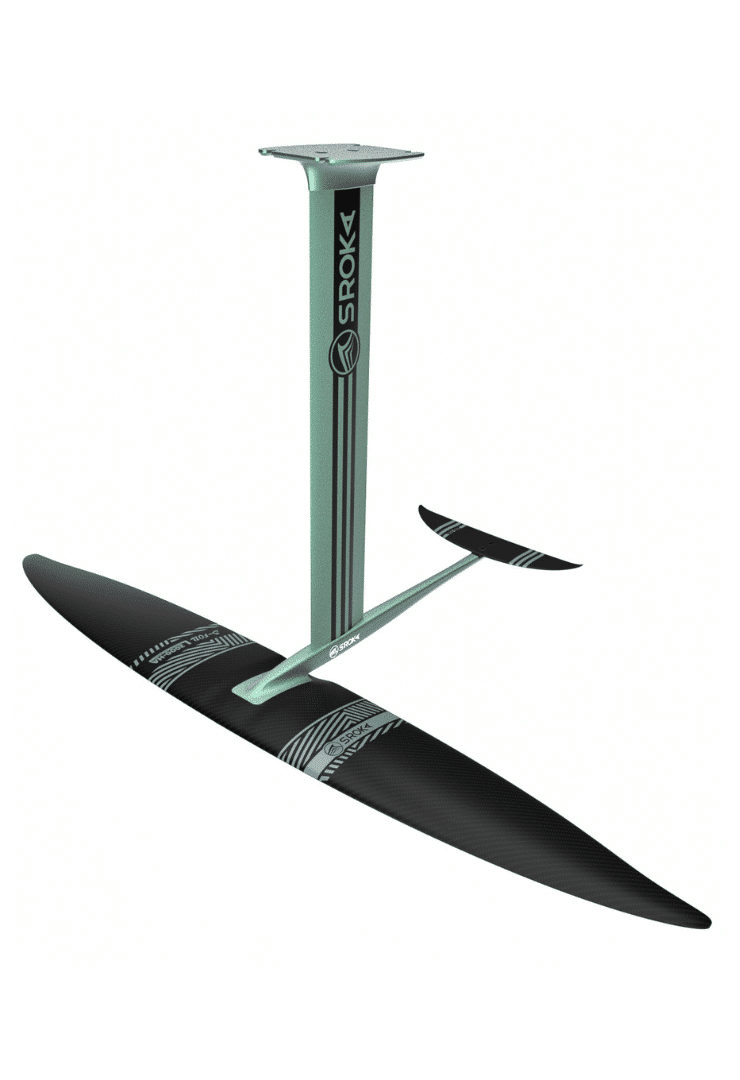
The stabilizer
By definition, the stabilizer is there to stabilize and give a little lift to the foil.
A large stabilizer will make pumping easier at the start, by slowing down the foil a little and giving more support on the foil. But it will block the oscillation of the foil a little more, and slow down your foil a little more.
A smaller stabilizer will increase the glide of the foil and stabilize the foil less. As a result, foil will be easier to swing. It requires more finesse in the supports and is therefore more technical (recommended for good riders).
We have developed a stabilizer in 290 cm HA with a high aspect ratio. It allows you to fly for a long time with less effort. However, it will slow down the foil.
The aim of pumping is to fly the longest and/or cover the greatest distance. Consequently, speed requires a lot of speed, so you won’t be able to fly for very long. If you want to start pumping or fly for a long time, we recommend a larger stabilizer (the 290 HA).
The choice of board
For pumping, choose a board that’s light, compact, solid and rigid. Rigidity is the key to sending energy to foil. Otherwise, you’ll be pumping in a vacuum (the board will deform and tire you out for nothing). A compact board under 4’0 is more conducive to efficient pumping.
How much board do I need for dockstarting?
A low volume is recommended. You can use your surfboard foil, but volume is not necessary. The lower the volume, the easier it is to pump. A volume of around 14-17 L is a good alternative.
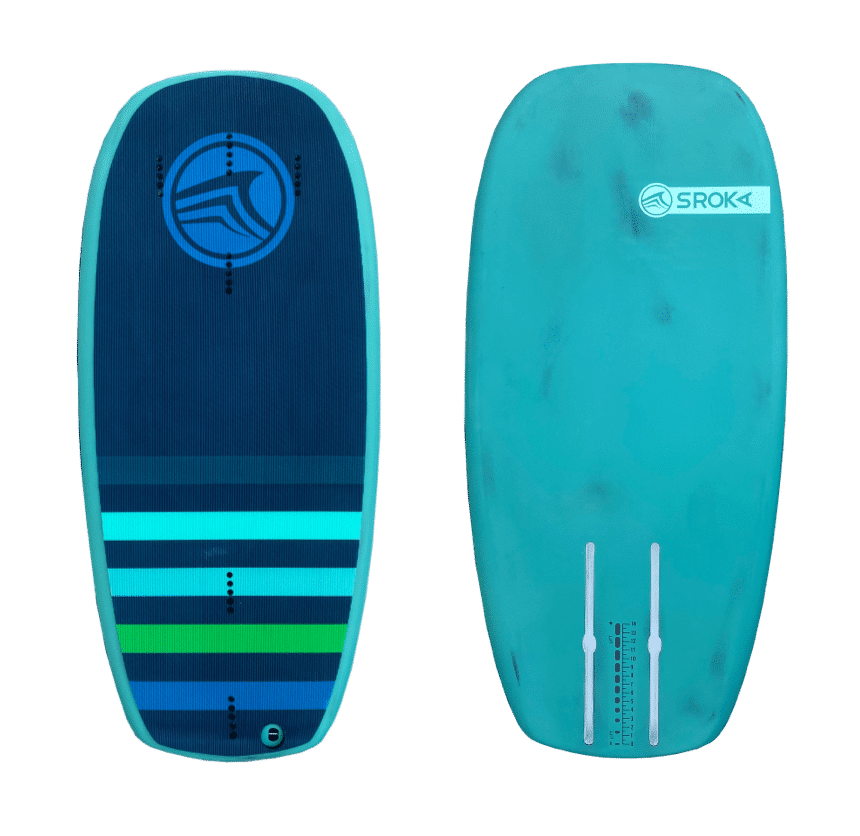
How long a board should I use for dockstarting?
A board that’s too big will be at a disadvantage compared with one that’s too small. In dock start you don’t need a long board. If you go for the 4’0 pocket ( 125 cm) or the mini pocket 3’3 ( 97 cm), you’ll have the two most interesting options for you. Beginners will opt for the slightly larger board. It’ll give you more ease and room to position yourself on the board. The Mini pocket will be more suited to demanding riders looking for a more compact, lightweight board.
What’s the best place to start dock start?
The pontoon, the best option for getting started.
Dock start is a sport that can be practiced almost anywhere. No special conditions are required. All you need is a place to start and your equipment.
The pontoon is the ideal place to start dock start. It’s stable, easy to find and allows you to get back on the pontoon easily after each try. Ideally, you should find a pontoon with a bit of length that will allow you to pick up speed. Watch out for obstacles in the water: booms, buoys and the like. If you’re using a kite with a lot of wingspan, this can be penalizing and lead to a fall.
To find the perfect pontoon near you, use google earth or google map to find the best option for you.
The ladder planted in the sand, or starting from the beach for good climbers.
If you don’t have a pontoon close to where you are, you can create your own “pontoon” by positioning a folding ladder in the water. This opens up an infinite range of possibilities, but you’ll need to perfect your technique if you want to get off with the minimum of momentum.
So train on the pontoon to shorten your run so that you can start without a run-up.
The second option is a beach start. If you choose this option, start with a mast of around 70 cm and ideally a beach that plunges quickly into the water. This will prevent your foil from hitting the sand all the time.
Starting with a dockstart is not the easiest option. If you’re a wingfoiler, we advise you to get used to pumping by holding the sail by the front handle (in freefly mode) and trying to pummel as much as possible to stay in the air. You can do the same in wakefoil by picking up speed behind the boat and releasing the rudder. Surfing foil is also a good method, but requires mastery of the take-off, which is no mean feat for a beginner.
Pumping is a very good alternative when the wind is lacking on our spots.

What are the benefits of dockstart?
Dockstarting and pumping aren’t just for fun, they’re also for good. Here’s why:
- A good pumping technique will enable you to take off earlier in the wing. You’ll also be able to avoid a few falls when you pass through a soft patch, by pumping until you regain air.
- It is useful for connecting waves in surf foil or for free flying in wing foil.
- This strengthens cardio, leg, back and abdominal muscles. You’ll work the leg muscles to give impetus to foil, the back muscles to maintain posture and the abdominal muscles to stabilize the torso. It’s also a great cardio workout, as you need to make a constant effort to move forward.
- It’s a perfect solution for training when there’s no wind. Great fun once you’re past the beginnings. It’s easy to create an emulation between friends.
- The main advantage is that you don’t need much equipment. All you need is a foil and a board.
 Le Magazine
Le Magazine



